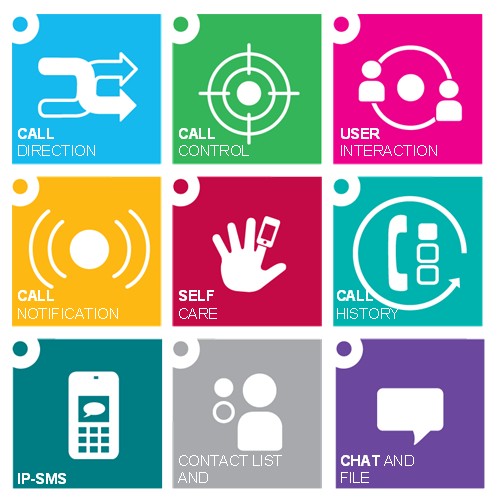Alcatel-Lucent opens the doors for 4G LTE programmers


Joe Phone-User will never see it, but underneath his bright, shiny iPhone 5 or Samsung Galaxy S3's blazing fast 4G Long Term Evolution (LTE) data speed there's a whole infrastructure world for developers to create new applications. The number two company in providing the LTE foundation is Alcatel-Lucent and they're opening the doors to low-level developers by introducing a suite of application programming interfaces (APIs).
These nine Nine ‘New Conversation APIs’ are designed to give developers easy access to communication capabilities in service providers’ IP Multimedia Subsystem, the infrastructure that sits at the heart of 4G LTE and IP networks.
Specifically, Alcatel-Lucent claims that, "These capabilities include high definition voice and video, audio/video conferencing, interactive voice, messaging and call control, which can be used to build services for both consumers and businesses. ... To jump-start the developer ecosystem Alcatel-Lucent is leveraging its ngConnect program, which brings together service providers and apps developers as well as offering easy access to the APIs, along with a fast prototyping environment provided by the New Conversation API developer portal. These APIs are based on REpresentational State Transfer (REST), a popular, easy-to-use software architecture used to create applications for the Web."
In a statement, Brian Partridge, VP of research at Yankee Group said: “Opening the network up in a way operators. By exposing the full breadth of IMS (IP Multimedia Subsystem) via RESTful APIs, Alcatel-Lucent can offer their core customer base a new way to create and monetize innovative applications and recoup their investment in IMS infrastructure. In an age of increasing OTT competition, service providers are eager to find
So what kind of applications can you create with these the New Conversation APIs? Alcatel-Lucent cited the following examples:
• Anana has created an app that allows subscribers to convert their last tweet into a speech ringback greeting or initiate a call with multiple participants through their Facebook wall, making group voice or video chat easy.
• Camka can now offer a better customer service by replacing costly maintenance travel with faster, more efficient problem resolution through a video assisted maintenance call.
• Aricent has expanded the scope of security alerts for their smart home solution by notifying multiple contacts through video calls when a home intrusion or emergency is detected as well as using alternative means of contact like SMS, e-mail or even social networks like Facebook depending on peoples’ preferences.
• Alten, in just four weeks, ported a traditional Intelligent Network (IN) service to a web-based application that provides advanced anonymous call features and call control capabilities.
The bottom line, according to a statement by Dave Tidwell, Anana's COO is that “The New Conversation APIs enable third party application developers to focus on the creation of rich consumer experiences across a wide range of devices – from mobile phones to tablets to PCs - without having to deal with the complexity of directly interacting with the network. This rapid applications development capability and common interface reduces the time required from years to weeks and allows the service provider to quickly open new revenue streams."
And what service providers or software developers doesn't want to open up new revenue streams quickly? Alcatel-Lucent wants to convince both carriers and programmers that their APIs offer them real value in the hope that they'll soon surpass the number one 4G/LTE infrastructure provider, Ericsson. To re-purpose an old advertising slogan, "We're number two, but we try harder," could be Alcatel-Lucent new programming motto.
Related Stories: